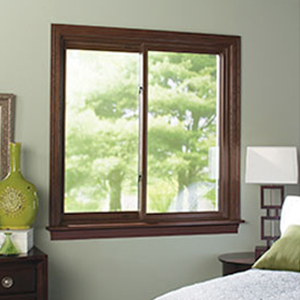Condensation is a sure sign that your home windows have to be replaced.
Windows are a crucial barrier in between the severe, variable weather outside and our calm, constant residence temperatures. Home replacement windows quite often have a fifteen to twenty-year life expectancy, so luckily we do not have to think about changing them frequently. But recognizing when it's time to replace them can be difficult. You could be tempted to try and hold out for another season if you notice the warning signs. However replacing your windows currently could help you extend the life of your entire residence and also maintain you and also your household warm all winter months long. Here are a few indications that your home windows are not prepared for the extreme wintertime this year.
Drafty Residence
As home windows age, they begin reducing, breaking, and not closing correctly, enabling air from within your house to flow out. As a result of this, your HVAC system has a hard time to keep your residence at a consistent temperature as well as sends your energy costs skyrocketing. If your residence is visibly extra drafty or your electric costs seem to be going up this succumb to no apparent factor, you might wish to have your windows had a look at.
Challenging to Lock
We delight in having our home windows open when the weather behaves, but they shouldn't be open every one of the moment. Throughout the winter months and when we're not home, your windows need to be shut in location and also locked. Windows with malfunctioning locks is a major security danger that need to be treated immediately to keep your family secure. Typically the lock can be fixed reasonably, but if the window is having trouble staying open or shut or is leaking air, it may be best to simply set up a new one.
Condensation Forming
The greatest indication that you require brand-new windows is when condensation starts to base on the within your home window when it is shut and also locked. This is indicative of a most likely incurable flaw as well as ought to be attended to asap to avoid the potential development of mold and mildew in the structure, which can spread to various other areas of your residence and also trigger severe damage when left untreated.
Have you just about had it with your old, breezy home windows?
Is this the year you've decided to ultimately change your windows? Changing your home windows with brand-new ones features great deals of advantages, consisting of a power performance boost, far better air flow, as well as far better top quality of light in your home. The National Fenestration Ranking Council accredits and classifies windows (along with doors as well as skylights) on their performance and also energy efficiency. When you're looking for new windows you'll see these rankings on the NFRC label. In this week's blog, we'll talk about ways to read this tag to earn sure you're making a notified decision on your new home windows.
Warm Gain and also Loss
The first 3 residential or commercial properties on the tag pertain to just how the window executes with regard to warm gain and also loss. Windows gain as well as lose heat in 3 means:
Direct transmission via the glass.
Radiation of heat from the sunlight right into the house, as well as away from the Buresh Home Solutions house from objects in your home.
Air leak via and around the window.
U-factor
This is "The price at which a home window, door, or skylight conducts non-solar warm flow." The takeaway below is "The lower the U-factor, the a lot more energy-efficient the home window, door, or skylight."

Solar Heat Gain Coefficient
The SHGC tells us how much radiation is admitted through the window and released as warmth in the residence. The reduced the number, the much less warm is transferred. Nevertheless, this doesn't necessarily imply you want a low SHGC. For example, due to the fact that a greater SGHC suggests the home window enables much more heat in, you can permit extra solar warmth inside in the wintertime, which might decrease your heating needs. In this instance, the environment you live in will certainly play a significant factor in choosing an SHGC score.
Air Leakage
This evaluates what does it cost? air the window lets in about a certain pressure distinction across it. The reduced the score, the less air leak.
Sunlight Transmittance
The following two rankings determine how much light a home window lets right into your house.
Noticeable Transmittance (VT).
This number between 0 as well as 1 steps what portion of the range of visible light the home window lets through. The higher the portion, the more light the home window will enable. If you want to use daylighting in your home, you'll desire a higher fraction. If you intend to minimize interior glare, you could want a reduced portion.
Light-to-Solar Gain.
This number is the ratio in between the SHGC and the VT. "The greater the number, the more light sent without adding extreme quantities of heat.".